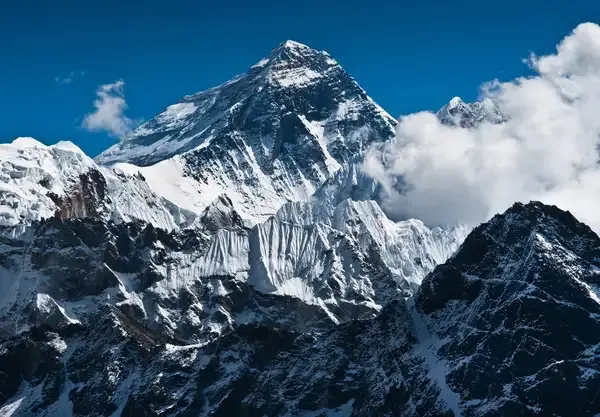- Home >
- Science
- > Innovation
Is Mount Everest Really the Tallest Mountain in the World?
Mount Everest is widely recognized as the tallest mountain in the world when measured from sea level to its peak, reaching an elevation of 29,032 feet. However, if measured from base to summit, Mauna Kea in Hawaii surpasses Everest. Mauna Kea's base is located deep beneath the Pacific Ocean, and when its underwater portion is included, it measures over 33,500 feet. Additionally, if considering the point farthest from Earth's center due to the equatorial bulge, Mount Chimborazo in Ecuador takes precedence.

When discussing the ''tallest mountain in the world'', most people instinctively think of ''Mount Everest''. However, this common perception invites a deeper exploration into what constitutes the tallest mountain and the factors influencing its height. To understand this better, it is essential to consider both ''absolute height'' and ''relative height'', as well as other contenders for the title of the tallest mountain.
Understanding Mountain Height
The height of a mountain is typically measured from sea level to its summit. In this context, ''Mount Everest'' stands at an impressive ''8,848.86 meters'' (29,031.7 feet) above sea level, making it the highest point on Earth when measured from this baseline. However, when evaluating what it means to be the tallest mountain, one must also consider the mountain's base, which can significantly alter its overall height.
The Tallest Mountain from Base to Summit
While ''Mount Everest'' is the highest mountain above sea level, ''Mauna Kea'' in Hawaii takes the crown when considering height from base to summit. Mauna Kea rises over ''10,000 meters'' (32,808 feet) from its base on the ocean floor to its peak, although its elevation above sea level is only ''4,207.3 meters'' (13,803 feet). This distinction shows that while Everest is the tallest when measured from sea level, Mauna Kea is longer when considering its geological structure.
Key Factors Influencing Mountain Height
Several factors influence the perception of a mountain's height:
- Geological Activity: The movement of tectonic plates can cause mountains to rise over time. For instance, Everest's height continues to change due to the ongoing collision of the Indian and Eurasian plates.
- Glacier Melting: Climate change and glacial melting can affect the perceived height of mountains. The weight of glaciers can compress the land beneath them, and as they melt, mountains may appear taller.
- Measurement Techniques: Advances in technology, such as GPS and radar, have led to more accurate measurements of mountain heights. This can lead to reevaluations of established heights, as was the case with the recent measurement of Mount Everest.
Comparative Table of Notable Mountains
To better illustrate the different aspects of mountain heights, here’s a comparative table:
| Mountain | Height Above Sea Level (meters) | Height from Base (meters) | Location |
|---|---|---|---|
| Mount Everest | 8,848.86 | 8,848.86 | Nepal/Tibet |
| Mauna Kea | 4,207.3 | 10,211 | Hawaii, USA |
| K2 (Mount Godwin-Austen) | 8,611 | 8,611 | Pakistan/China |
| Kangchenjunga | 8,586 | 8,586 | Nepal/India |
| Lhotse | 8,516 | 8,516 | Nepal/Tibet |
Conclusion: What Defines the "Tallest" Mountain?
In conclusion, while ''Mount Everest'' is widely recognized as the tallest mountain in the world based on its height above sea level, it is essential to understand that other mountains may exceed it in terms of height from base to summit. ''Mauna Kea'', for instance, presents a compelling case for the title when considering its underwater base. Therefore, the answer to the question of whether ''Mount Everest'' is really the tallest mountain in the world depends on how one defines "tallest."
As our knowledge of geology and climate advances, so too does our understanding of these majestic natural formations. Whether you are a mountaineer, a geologist, or simply an enthusiast of the great outdoors, the quest to understand the world's tallest mountains is a fascinating journey that reveals the complexities of our planet's topography.












